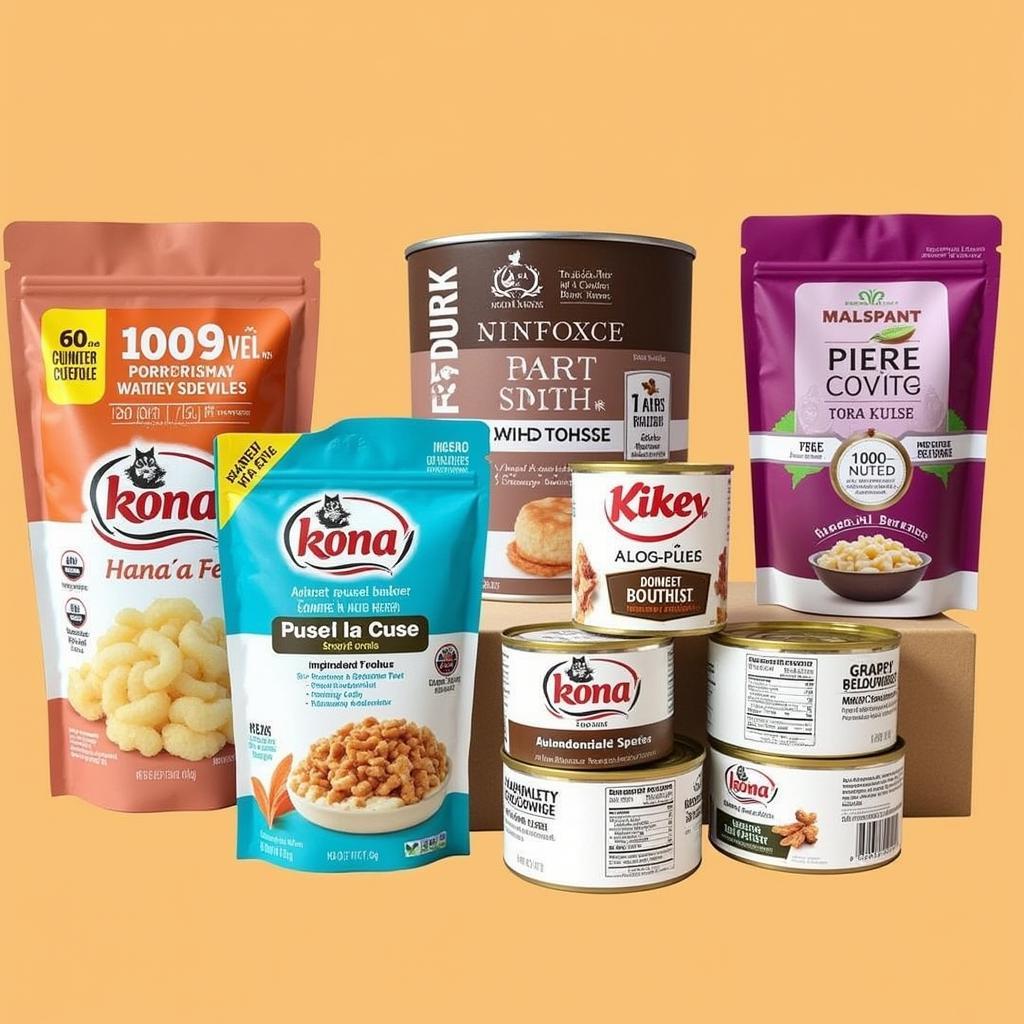Puree Cat Food offers a convenient and often necessary way to ensure your feline friend receives proper nutrition. Whether your cat is recovering from surgery, has dental issues, or is simply a picky eater, pureed food can be a lifesaver. This guide explores the benefits, different types, and how to choose the best puree cat food for your furry companion. After the introduction, we’ll dive deeper into making homemade pureed cat food. For picky eaters, sometimes a simple food topper can make a world of difference, and you can find some great tips in our article on the best food topper for picky dogs.
Why Choose Puree Cat Food?
Pureed cat food provides a variety of benefits, especially for cats with specific needs. It’s easier to swallow for cats with dental problems or those recovering from oral surgery. It can also be a great option for senior cats who struggle with chewing or digesting regular kibble. Additionally, pureed food can be helpful for stimulating appetite in sick or convalescing cats. Finally, some cats simply prefer a smoother texture, and pureed food can add variety to their diet.
Choosing the right puree can be tricky, so it’s important to understand the options. Let’s examine the types of pureed cat food available. You may also find our review of the Hoffman food processor helpful for creating the perfect puree.
Types of Puree Cat Food
Broadly speaking, there are two main categories: commercial and homemade. Commercial pureed cat foods are readily available in pet stores and online. These often come in pouches or cans and are formulated to meet specific dietary needs. Homemade pureed cat food, on the other hand, allows you to control the ingredients and cater specifically to your cat’s preferences and sensitivities.
Commercial Puree Options
Commercially available purees range from complete and balanced diets to supplemental food toppers. These can be a great option for busy pet owners, but it’s essential to read the labels carefully. Look for options that are specifically designed for cats and meet the Association of American Feed Control Officials (AAFCO) guidelines.
Homemade Puree: Taking Control of Your Cat’s Diet
Creating homemade pureed cat food can be a rewarding experience, allowing you to customize the ingredients and ensure freshness. The following section delves deeper into the process of making homemade pureed food for your cat.
Making Homemade Puree Cat Food: A Step-by-Step Guide
Creating a nutritious and palatable puree for your cat is easier than you think! Follow these steps to create a delicious meal your cat will love. Looking for inspiration? A baby food book can be a great resource for creating healthy purees, offering valuable tips and techniques applicable to cat food as well.
- Choose Your Protein: Opt for lean protein sources like chicken breast, turkey, or fish.
- Add Vegetables: Include cooked and pureed vegetables like carrots, sweet potatoes, or green beans for added vitamins and fiber.
- Consider Grains (Optional): Cooked rice or oatmeal can be added for carbohydrates, but only in moderation.
- Blend It Up: Combine the ingredients in a blender or food processor until smooth.
- Adjust Consistency: Add water or broth if needed to achieve the desired consistency.
Choosing the Right Puree for Your Cat
Whether you choose commercial or homemade puree, consider your cat’s age, health conditions, and dietary needs. Consult with your veterinarian to determine the best option for your feline friend. They can help you create a balanced diet plan that incorporates puree effectively. For kittens or cats with special dietary requirements, it’s crucial to choose the appropriate type of food. You might consider halal baby food for a guaranteed source of nutrition adhering to specific dietary laws. This attention to detail ensures your cat receives optimal nutrition, tailored to their unique needs. Remember, providing the best possible nutrition contributes significantly to your cat’s overall health and well-being.
Common Concerns about Puree Cat Food
Is pureed food a complete diet? Can I mix it with dry food? These are just a few questions cat owners often have about transitioning to pureed food. Let’s address some common concerns:
- Nutritional Completeness: Ensure the chosen puree provides complete and balanced nutrition.
- Texture and Palatability: Experiment with different consistencies and flavors to find what your cat enjoys.
- Transitioning Slowly: Gradually introduce puree into your cat’s diet to avoid digestive upset.
 Different Types of Commercial Puree Cat Food
Different Types of Commercial Puree Cat Food
Conclusion
Puree cat food offers a versatile and beneficial dietary option for cats of all ages and health conditions. Whether you choose commercial or homemade, remember to prioritize your cat’s individual needs. By understanding the benefits and options available, you can make informed decisions about incorporating puree into your cat’s diet, ensuring they receive the nourishment they need to thrive. For more specialized options, consider exploring brands like Mellin baby food which, while designed for babies, can offer insights into creating nutritious purees adaptable for cats.
FAQ
- Can kittens eat pureed cat food?
- How long can I store homemade puree?
- Is pureed food suitable for long-term feeding?
- What are the signs of a food allergy in cats?
- Can I add supplements to my cat’s puree?
- How do I transition my cat from dry food to puree?
- What if my cat refuses to eat pureed food?
Need further assistance? Contact us! Phone: 02437655121, Email: minacones@gmail.com or visit us at: 3PGH+8R9, ĐT70A, thôn Trung, Bắc Từ Liêm, Hà Nội, Việt Nam. We have a 24/7 customer service team.